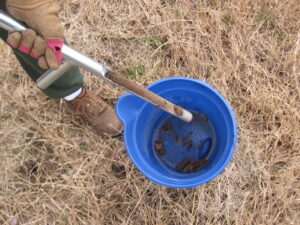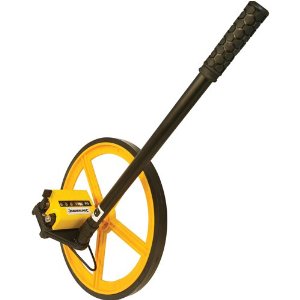By Janet Anastasi
From an acreage point of view, lawns are one of the largest crops in the United States. Much money, time, and effort is spent on lawns, but sometimes the outcome is not a happy one. Healthy Virginia Lawns, a program run by the Piedmont Master Gardeners and available to Charlottesville and Albemarle county residents is designed to change that outcome. Focusing on measurable inputs (soil type, composition and lawn area), the resulting customized nutrient management plan provides the homeowner with specific nutrient recommendations, including the specific amounts of lime and fertilizer to apply and when. The environmental benefit of the program is to decrease lawn over-fertilization with the resulting improvement in water quality. The program focuses on lawn areas of 2 acres or less and consists of five parts — an on-site visit by a Master Gardener(s), an evaluation of the lawn and site, lawn measurement, soil test, and finally, a nutrient management plan designed for the site.
Upon receiving the application, the onsite visit starts offsite with a map of the property from the city or county data base. This map contains information on slope, drainage, lot size and adjacent properties, which is helpful in planning the site visit. The homeowner does not need to be present for the site visit but is encouraged to be present if at all possible. When the appointment is made, the Master Gardener will ask if there are issues or problems that the homeowner has so that additional information can be supplied to the homeowner during the site visit.
The on-site visit takes about 1 1/2 hours, depending on the site and homeowner questions. Upon arriving at the site, the Master Gardener does a lawn evaluation — identifying if the grass is cool or warm season grass or another type of vegetation, how dense the grass is, how much sun the lawn is receiving and assesses the lawn for weed presence.
Grass density is an indicator of grass health, although sunlight and soil type also are determining factors in grass health. Presence or lack of certain weeds is also a quick indicator of soil type, drainage and other issues relating to turf health.
The soil test identifies the texture of the soil (clay, sandy, loamy). Most of the soils in this area are clay type soils, although amendments, drainage, site grading, soil additions and other factors can significantly change the soil type. Generally, only one soil sample is sent, but additional samples may be called for. Twenty to 30 divits are taken throughout the property for one sample. Separate soil samples are recommended when there are significant site differences such as slopes, shade, wet or dry areas which could have different soil profiles and therefore different nutrient requirements. If different grass types are to be grown, additional samples may be recommended. 
Lawn measurement is done with a measuring wheel. The lawn area is broken up into distinct areas and measured. The total of these areas results in the square footage of the lawn area. The site map downloaded during the planning process, guides the measurement and serves as a check that all of the turf area has been measured. 
The site visit is complete when the lawn evaluation is done, the turf area measured and the soil sample or samples have been taken. At the end of the site visit, the Master Gardener will leave any additional information requested by the homeowner, or note that additional information has been requested. The homeowner will be given the soil sample (or samples), soil sample boxes, a mailing box with preprinted label and mailing instructions.
Soil sample results are generally available 7 to 10 days after the sample is received by the testing lab. Next, the nutrient management plan is written based on the results of the soil sample and the unique conditions of the lawn. The nutrient management plan will contain the following information:
- Area of lawn (in square feet)
- Soil pH
- Fertilizer recommendation
- Lawn fertilization calendar: timing and amount of fertilizer to be applied to lawn area according to grass type
- Lime: recommendation and pounds of lime per application based on soil test results
- Organic top dressing recommendation: amount of compost required for lawn area
This customized information based on your individual lawn environment is an invaluable tool in growing and maintaining a healthy, economical, environmentally-sensitive lawn. Applications for the program are available by emailing the horticulture Help Desk at albemarlevcehelpdesk@vt.edu.
Resources:
TIPS on keeping your lawn Green. . . and Virginia’s waters Clean. Virginia Cooperative Extension, Virginia Tech, and Virginia Department of Conservation & Recreation. http://www.dcr.virginia.gov/soil_and_water/documents/tipsbay.pdf
“Soil test Note 17: Lawn Fertilization for Cool Season Grasses,” M. Goatley and E. H. Ervin, Virginia Cooperative Extension Publication at http://www.pubs.ext.vt.edu/452/452-717/452-717.html
“Lawn Fertilization in Virginia” by J. M. Goatley Jr., D.R. Chalmers, J. R. Hall III, and R. E. Schmidt, Virginia Cooperative Extension Publication at http://www.pubs.ext.vt.edu/430/430-011/430-011.html
“Maintenance Calendar for Cool-Season Turfgrasses in Virginia,” by Mike Goatley and Shawn Askew, Virginia Cooperative Extension Publication at http://www.pubs.ext.vt.edu/430/430-523/430-523_pdf.pdf